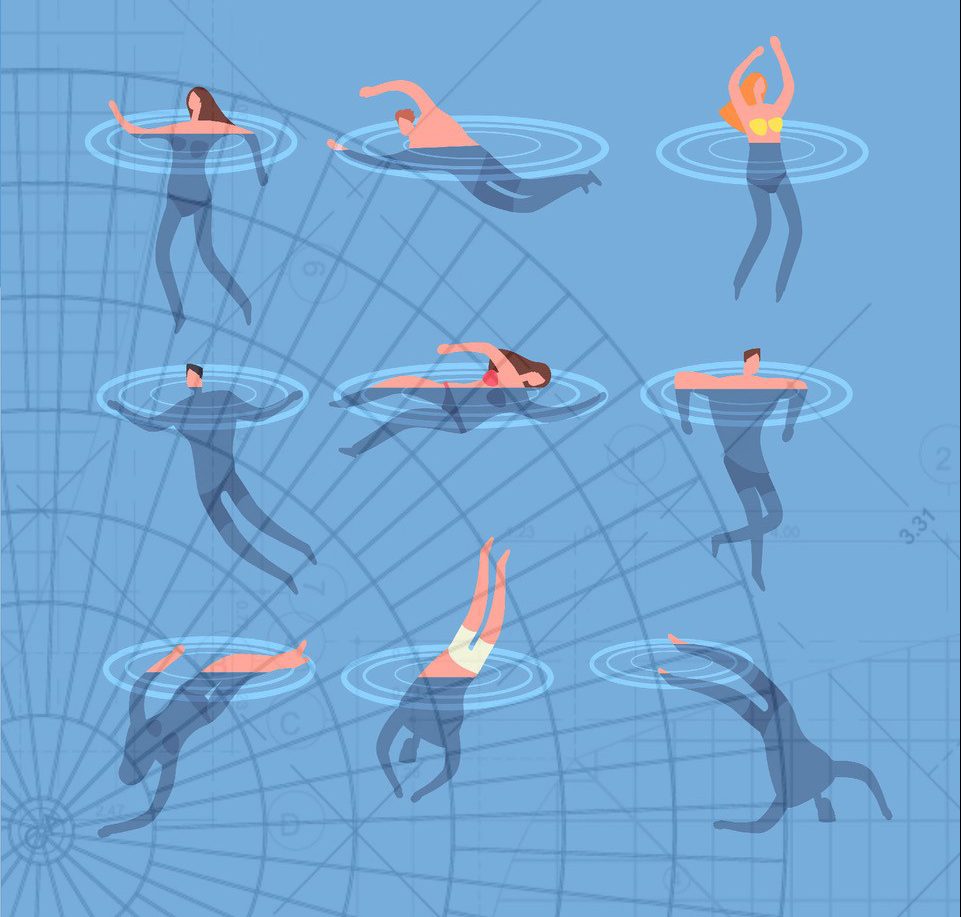There’s a Problem with Problem-Solution Thinking The Solution: Stop Using It
By Maureen K. McCarthy, Co-Founder, The Center for Collaborative Awareness
I have a problem on my mind right now. It’s running around in my head like a virtual roulette wheel waiting for the ball to drop, and I’m agonizing over how to fix it. I can’t figure out if it’s my fault or one of the other people involved, and I swing from caring too much to shoving the thoughts to the bottom of the proverbial dustbin to avoid the pain. And here’s the rub, I have a rare, genetic lung disease, and with 10% lung capacity stress of this sort constricts my lungs, and the pain in my chest feels like fire. It’s not a good look on me.
As a longtime meditator, mindfulness practitioner, and self-care champion, I have puzzled over why these problem-focused ruminations still periodically grip me and wreak havoc on my body. Stress, in its many forms, alerts me to the uneven balance of resources and needs. My body is telling me I have a problem, and it demands that I tune in.
It makes perfect sense. Our world was built using problem-solution thinking, which encourages the brain to focus on problems in exchange for the dopamine hit of certainty we receive when we find a solution. We are taught from a young age to view life as a series of never-ending problems to be solved — what to make for dinner, the best route to avoid traffic, how to pay the bills, or how to entice someone to love us. Being a good problem-solver is a highly praised and sought-after skill. When someone in your circle is faced with a problem, don’t you want to jump in and help solve it, or at the very least, wish it would resolve itself? It is part of our social construct. We have a complex relationship of coming together to solve problems, and we hold that pact in the highest regard. So, if problem solving is the holy grail, why does it wreak such havoc on my mind and body?
The Problem-Solution Model is the Architecture of our Civilization
Name any area of our lives, and we find a large part of our time and energy attending to problems that need to be fixed. We created hierarchy, roles, standards, expectations, and oppression based on the ever-present worldview of getting over, under, or through things. We spend our lives swimming in the water of protection from problems. In fact, our legal, political, and medical systems, to name a few, were built on this very architecture. They were diligently constructed to help us define the problem (threats to safety, liberty, health); label the source of the problem (felon, opposition, cancer); and then determine the method to solve the problem (prison, laws, medication).
Problem-solution thinking is so ubiquitous that we don’t notice how often we say things like: “What’s wrong? You can overcome this. Or… The problem is…”
I decided to do a week-long experiment to keep track of the number of times I offhandedly used problem-solution words or phrases, making a note in my phone every time I did so. I was shocked to find that, even though this is a topic I study, I swam much deeper in those waters than I imagined. It is definitely a “can’t see the forest for the trees” experience for me. Funny enough, the phrase can’t see the forest for the trees is even defined as “someone who is too involved in the details of a problem to look at the situation as a whole.”
A Brilliant Framework
Problem-solution thinking is a necessary and brilliant framework that has generated remarkable progress over the course of human history. It is exactly what we needed in order to advance to this stage. We owe an enormous debt of gratitude to our cumulative problem-solving endeavors. While we couldn’t have gotten this far without it, problem-solution thinking may not be robust enough to support us in our far more complex, fast-paced future.
A New Model for Collaboration: Desire-Invention Thinking
Today’s constantly changing landscape requires a new model to collectively engage our creative energy. It’s called Desire-Invention Thinking. It enables groups to rewire their brains to harness group stress, rather than avoid it, and use it to accelerate what we ultimately want to create and experience.
Every day you wake up as the creator of your life, irrespective of anything that happened yesterday, whether it was good, bad, right or wrong. As the creator, there’s a landscape in front of you.
You could approach the landscape and the people you interact with from the perspective of where the problems lie, with a running list of things to tackle, strategies to get out the door, or what needs to be managed. It is the equivalent of a storm tracking device. The very nature of the problem-solution oriented world says storms are always on the horizon, be vigilant. Our brains are continuously on high alert for potential storms, which helped us devise a myriad of ways to avoid or minimize the fallout from the storm.
Our default mode of storm tracking is one way to approach the landscape, yet it is not the only way. When you wake up as the creator of your life each day, you can take stock of the landscape — which could even look like World War III — and determine what it is you desire. From there you can engage your co-creative energy to design or invent what you desire. This enables you to envision what the landscape makes possible rather than focusing on fixing what’s broken. The two approaches, scanning for problems or scanning for desires, light up very different neural networks in the human brain.
Connection and Protection
Our brains have two main functions that have emerged through millions of years of evolution — to connect us for growth and to keep us safe.
Both are needed to survive and thrive as a species. We can call these two neural networks the Connected Brain and the Safety Brain. In any given moment, we sit somewhere on the continuum between the two. The development of our society has made the Safety Brain our first and main mode of interaction. It is the foundation of the problem-solution oriented world in which we swim. In keeping the Connected Brain as a secondary mode, we inadvertently restrict our creativity, productivity, and resiliency because we are busy keeping an eye out for storms.
Calming my mind over the years has drastically reduced my stress, and thus kept me alive longer than my doctors thought possible. I’ve been able to move myself from living in the eye of the storm to the equivalent of watching a storm two miles off the coast. Yet I still find myself getting roped into stressful, Safety Brain thought patterns. I know my brain is oriented toward tracking storms, but I have also been culturally encouraged to strengthen that storm tracker on a daily basis. It’s a continual cycle. This awareness started me on a path to look for the root beneath the root of my stress. I have come to suspect that it is problem-solution architecture that has been tamping down the impact of my stress management efforts. I was using mindfulness to solve a problem!
In the Desire-Invention Model, rather than stress alerting me to a problem, I now see stress as my body‘s way of telling me there is a message for me. I am not suggesting people should deny the stress on the landscape. In fact, it is the exact opposite. I actively embrace the stress in my system and use it to invent or design what really matters to me. It allows my Connected Brain to drive my behavior.
The First Step is Awareness
Because we are inadvertently swimming in problem-solution thinking, I invite you to start by simply growing your awareness of when you engage it. There is no need to change anything. Just notice. Try this 7-day experiment:
- Take 3 minutes to write down words and phrases that invoke or indicate problem-solution thinking. Examples: “Oh no, what are we going to do? I know there’s a solution somewhere. If he/she would only do X, everything would be fixed. The problem is…”
- Get a small notebook, or use your phone, to tally the number of times you notice yourself using the words: problem, solution, fix, broken or saying one of the phrases you wrote down.
- Make it a game with your friends or family to see how often we use problems. Be playful with it. It’s actually pretty humorous.
- After the seven days are finished, reflect on what it was like when you noticed yourself engaging in problem-solution thinking. Was it tied to stressful thinking? Did it raise or lower your energy? Would you like to continue the experiment?
Remember that in the awareness phase, you are not trying to change your behavior. That would be making yourself a problem. You want to notice, so it will be easier to make a mindful choice in the future.
What We Value Brings Us Together
When we pause to focus on what matters and invite others to join us in inventing or designing what we desire, we are more able to create community and strengthen our connections. Scanning the landscape for what we desire is life-giving because it points to what we care about. What we value is what brings us together; what we fear is what breaks us apart. I don’t happen to live in a body that can afford to break apart from others. I need meaningful connections with the people in my life in order to thrive, which is why I actively practice pausing when I label others as problems. Over the years I have created several tools that bring me from problem-solution to Desire-Invention Thinking. These practices help me see the forest and the trees.
When I started this article, I mentioned that a problem was running around in my head in real-time. I was making someone else a problem. That happens periodically because I live in a problem-solution world with a brain that is on high alert. I have now paused the roulette wheel to determine what I desire in that particular situation, and it helped calm my nervous system and open my heart and mind. Looking for what matters most to me is like taking a deep, cleansing breath. When I think about what I desire, I don’t need to make anyone else bad or wrong. Whole neural networks light up that were previously dampened, and my creativity and compassion come back online. And that is a good look on me.
ABOUT THE AUTHOR
Maureen K. McCarthy is the Co-Founder of the Center for Collaborative Awareness and Co-creator of The Blueprint of We, a collaboration design document used  by organizations and communities in 100+ countries. As a social scientist, Maureen has worked with organizations from Dropbox to the World Relief organization. She uses the neural circuitry of social connection to harness group stress and builds trust in fast-paced environments.
by organizations and communities in 100+ countries. As a social scientist, Maureen has worked with organizations from Dropbox to the World Relief organization. She uses the neural circuitry of social connection to harness group stress and builds trust in fast-paced environments.
